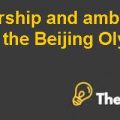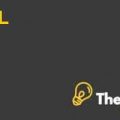The Impact Of The Technological Revolution On A 4-Day Workweek Case Study Analysis
Argument 2: The advancement in digital and Information and Communication Technologies use is bringing conflicting results.
If the frequency of overtime payment and the length of workweek days and hours would be same for both men and women, the ususal per week earnings of women tend to about 10 percent. (Lowenstern, 1972) Undoubtedly, technology has greatly influenced the lives of individuals ranging from a man to a women. The rapidly changing working environment has changed the industrial dynamics and trends across the world.(Henderson, 2014) Due to the increase in remote working, employees’ tend to prefer flexible working environment at the workplace.
Recent studies demonstrated the interest of employees towards remote working. About 42 percent of the employees reported their perception that their lives might be affected negatively in case of no access to remote working. About 41 percent of the employees considered remote working as one of the key factor for the future business operations. Similarly, about 60 percent of the people represented their interest to take a remote working job offer. (Roe, 2019)
Potentially, the introduction of information and communication technologies has led to the emergence of remote working environment which is highly demanded by employees in recent times. As it provides employees with flexible working options which not only results in productivity gains but also bring significant reduction in the burnout. (Roe, 2019) In fact, technologies does not tend to be exogenous drivers that are known to roll over society such as tsunami demonstrating predicted outcomes. Rather, the development of technologies and their deployment after their creation tend to be associated with values, skills, institutions, and organizations which represents the final impact. (Report, 2017)
On the other hand, the use of digital technology and the information and communication technologies to perform business operations is mainly associated with the detachment of the work with the working environment. In 1970s and 1980s, creative thinkers llike Allan Toffler and Jack Nilles represented their perception that the future business operations of the organization would be closer to the homes of the employees through the use of modern technological approaches i.e. telework or telecommunication. In actual, the adoption of such type of working environment tend to be mainly associated with the culture of the organization and the structure of the economy.
The analysis of different countries over the determination of the high workers share for the use of Information and Communication Technologies was represented in report by joint ILO-Eurofound. The report mainly represented the performance of employees outside the working environment in countries such as the United States, Sweden, Netherlands, Japan, and Finland. Such increase in the outside working tend to serve as an alternative way for the cost-saving due to the eliminaton of many organizational processes such as printing.
The capacity of increasing productivity with Information and Communication Technologies work is considered to be mainly associated wih the temporal and spatial flexibility of the working environments. As such kind of working environments offer the associated outcomes like reduction in the communte time, saving the space of office, and increased autonomy of working time, innovation and improvement in the working behaviours, and possibility of working for longer hours with no reductions.
The possibility to work extended working hours through remote working is one of the main concern. This is due to the reason that in flexible working environment employees’ become susceptible to strict guidelines to complete the work in office working hours. In office working environments, each resource and facility is provided to the employees required to perform any task. This might influence the productivity and the growth of both the organization and the employees’ at work.
On the other hand, the individual characteristics which mainly include skills, motivation, dedication tend to play a significant role in association with the work efficiency. This is mainly driven and dependent on the effective use of the digital technology and Information and Communication Technologies. For this reason, the promiment organizational model has led to the change in the work environment to flexible one, time-banking and compressed four-days workweeks.
Factually, both the flexible organizational arrangement and compressed workweek to about four-days has although demonstrated positive impact on the jon satisfaction of the employees, productivity, work schedules satisfaction and absenteeism. In contradiction, employees might represent non-serious behavior towards their job duties due to less restricted working environment at the organization. This is expected to alter the expected outcome badly influencing the organizational growth.
Furthermore, organizations are expected to increase the four-day working hours to provide the employees with an extra paid day-off. Working for long and extended working hours i.e. about ten or more hours a day tend to badly influence the morale and satisfaction of the employees towards their work. This, as a result, rather increasing productivity would lower the potential and courage of the employees to be less interested in extra paid day-off. They would rather prefer to work whole week. (Messenger, 2018)
Conclusion:
The concept of four-day workweek supported by technological revolution is not new, however, many of the organizations have experimented with such practice as compared to statewide legislation. Technologies does not tend to be exogenous drivers that are known to roll over society such as tsunami demonstrating predicted outcomes. Therefore, the use of advanced technological approaches and the shift of the organizations towards four-day workweek environment has been increasing. This is due to the reason that majority of the organizations have been benefitted through this approach. Such organizations mainly include Microsoft Japan, Basecamp, Perceptual Guardian, and many others. Thus, the technological revolution will remain consistent with continuous imrpvement in the role of employees..............................
This is just a sample partical work. Please place the order on the website to get your own originally done case solution.











